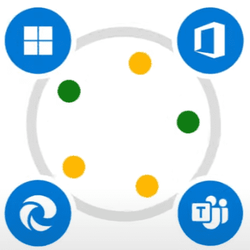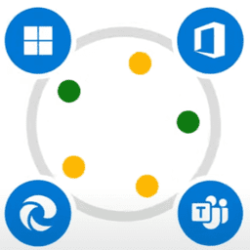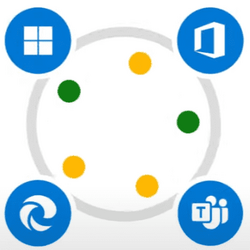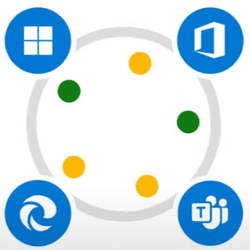With the coming of a new year, many people take the opportunity to set intentions for the future. We here on the Windows Autopatch team have chosen a single word to set the tone for 2023: more. In that spirit, we’re making more episodes of Behind the screens with Windows Autopatch – including this month’s episode all about FastTrack and Autopatch.
More represents not only the vision that drives Autopatch: help IT professionals do more with less, but also the spirit of innovation that inspires our product team. We want to make Autopatch more accessible, more useful, and more valuable to more enterprises.
More resources for onboarding
In order to help more enterprises get started with Windows Autopatch, the FastTrack service is now offering their resources and expertise to customers looking for additional guidance at no additional cost.
What is FastTrack?
FastTrack is a set of resources to help your organization onboard to Microsoft 365 services – in this case Autopatch. It is delivered remotely by specialists through documentation and one-one consultations. It provides a set of best practices and learnings gained from working with customers and from Microsoft core product teams, including the Customer Acceleration Team, a group of consulting engineers focused on helping customers adopt and scale their implementation of Microsoft services.
More breadth, more depth
With the introduction of FastTrack support, we now have broader capacity to help you in adopting Autopatch. These added resources enable the Customer Acceleration Team to go deeper into enterprise-specific issues. The result is a virtuous circle – learnings from Customer Acceleration Team engagements will be added to FastTrack resources, enriching your support experience, and the Customer Acceleration Team will be able to learn from more deep dives.
More about FastTrack and Customer Acceleration Team
Since you’re still here reading, we’ll link to the latest episode of Behind the screens with Windows Autopatch again so you don’t have to scroll up and hit the link to hear from Cameron King of the FastTrack team in discussion with me and Bev Ashton from the Customer Acceleration Team on the details of FastTrack support, the future of Autopatch, and the best super powers.
If you’re ready to engage with FastTrack, you can make your request for assistance here: Microsoft FastTrack
More updates to the service
The latest updates to Windows Autopatch offer the ability for enterprises to learn more about quality updates and retain control over two types of updates: “expedited” quality updates and updates to Microsoft 365 Apps.
Release announcements
The ‘Release management’ page in the Windows Autopatch section of the Microsoft Intune ‘Devices’ blade has a new tab: ‘Release announcements’. Now admins can more easily locate relevant release notes and knowledge base articles for updates. For more details, see our Autopatch documentation.

Ability to opt out of expedited updates
Quality updates are expedited when the Autopatch service determines that threat or vulnerability information makes a particular update critical to security. In this scenario, the update is applied to all device deployment rings at once. In recognition of the fact that some enterprises will have use cases where expedited updates are impractical or undesirable, we have introduced the ability to opt-out of expedited releases. This ensures that updates flagged as ‘expedited’ will be distributed via the standard ring progression cadence.
To opt out of expedited quality updates, you can go to the ‘Devices’ blade in Microsoft Intune, and choose the Release management blade under ‘Windows Autopatch. Change the slider from ‘Allow’ to ‘Block’ as depicted in the screenshot below.

For more detail about expedited updates, see the Windows quality updates section of our Autopatch documentation.
Ability to opt out of updates for Microsoft 365 Apps
The second opt-out feature coming to Autopatch will allow you to opt out of receiving Microsoft 365 Apps updates while still using Windows Autopatch to automatically manage and deploy Windows quality and feature updates. This feature is in private preview now, and is expected to be generally available by the end of this quarter.
Azure Virtual Desktop and Office 32-bit support
The ability to add Azure Virtual Desktop devices to Autopatch is now generally available. Note the following exceptions that are not supported:
For more documentation on this feature, see Register your devices.
- Multi-session hosts
- Pooled non-persistent virtual machines
- Remote app streaming
As a final note for Autopatch completists, the Windows Autopatch documentation has been updated to reflect the ability of the service to support Office 32-bit applications. This won’t result in any changes to existing tenants enrolled in the service. It is simply intended to improve clarity.
Source:

What’s new in Windows Autopatch: January 2023: FastTrack support
With the coming of a new year, many people take the opportunity to set intentions for the future. We here on the Windows Autopatch team have chosen a single word to set the tone for 2023: more. In that spirit, we’re making more episodes of Behind the screens with Windows Autopatch – including...
techcommunity.microsoft.com























